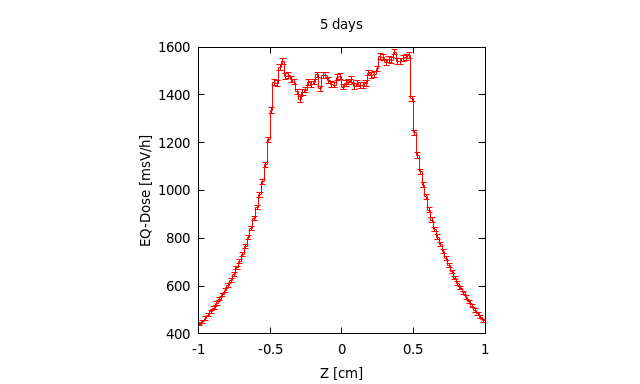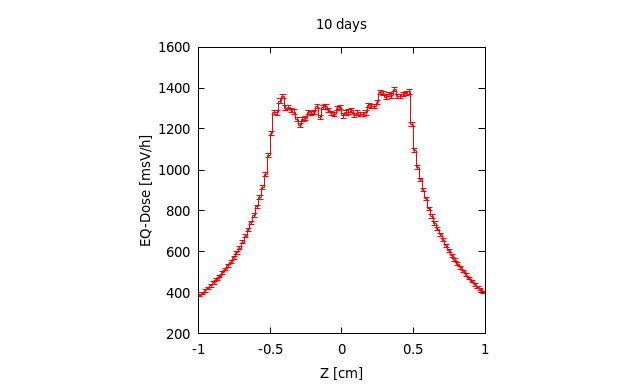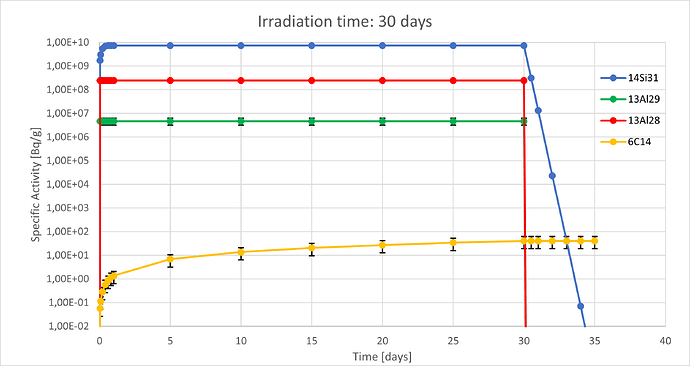Dear Fluka experts,
I’m currently trying to run a simulation about the activation of SiC. I’m interested in scoring the equivalent of dose after some time from the end of the irradiation (made by neutrons along a period of 30 days, coming from 4 different directions). In the attached file, there is a picture i made taking result from the RESCNUCLEi detector for different cooling times. As it can be noted, after about 5 days there are basically no more radioactive elements. The same cannot be said about the dose rate, for which I’ve posted in the attached file what I obtained for cooling times of 5 and 10 days, and even 1 year. The dose rate seems to decrease linearly, but what is really confusing me is that I’m getting very high values even at 10 days, when i should have not any radioactive material (even at 1 year from irradiation the values are still pretty high). Is fluka evaluating something that I’m not aware of, or have i put something wrong in my input file? Thank you for your attention. Best regards,
Leonardo
neutron_spectrum.txt (2.9 KB)
numerical_exercise.flair (6.0 KB)
source_newgen.f (10.4 KB)



